Each month, we bring you zone-by-zone garden care and planting tips. July in the Northern Hemisphere is mid-summer and nearly every garden is experiencing warm or hot weather. For July, our gardening tips are applicable in all zones. Here, you’ll find planting and care tips for trees, shrubs, perennials, annuals, bulbs, the lawn, and container gardens.
Use the USDA Hardiness Zone Map below to check your zone if you are unsure.
If you are unsure when the last frost in spring happens where you live–and when the first frost in autumn comes. Go to this post: Average Last and First Frost Dates for Cities, States, and Countries. The months between the last frost in spring and the first frost in autumn is the natural growing season for your region.
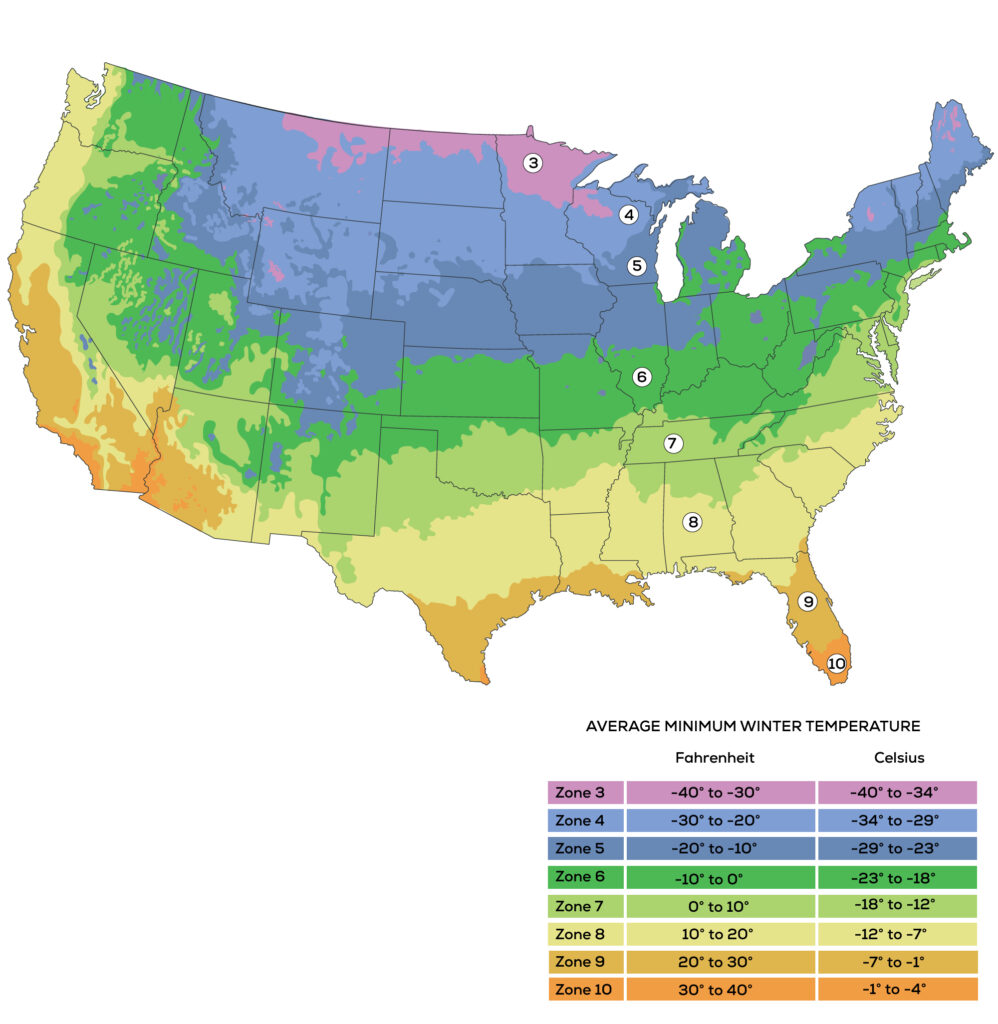
General tasks all zones
Water consistently and deeply in dry areas, with special attention to trees, shrubs, broad-leaved evergreens, and plants about to bloom. Water deeply in drought, and regularly in areas where dry summers are the rule. After light cultivation of the soil, an application of organic fertilizer, and a deep watering, the application of mulch will conserve soil moisture, keep down weeds, and maintain coolness around plant roots. Mulch will also protect the soil and plants from hot wind and sun. Weed carefully between plants in borders and beneath trees, shrubs, and climbers. Keep paths and drives weed-free by hand or with an organic weedkiller. This is the peak month for pests and diseases on roses and other vulnerable plants. Spray or dust regularly and keep eyes open: beetles, aphids, bag worms, berry moths, borers, mites and clover mites (lawns), grasshoppers, mealy bugs, thrips, leaf blights, mildew, rust, lawn diseases, and nematodes. In areas of summer rain, check drainage and install tiles or ditches if necessary or use raised beds.

Trees all zones
Remove trees that are weak, rotted, or tangled in utility wires. Transplant evergreens. Plant container or balled-and-burlapped trees if the weather is not too hot. Plant palm trees. Water as necessary. Water established trees deeply in dry weather; water early or late in day to stem evaporation. Weed around trees; apply a preemergent herbicide. Aerate compacted soil around roots. Watch for pests and signs of disease. Take softwood cuttings to start new plants. Order trees for fall planting.
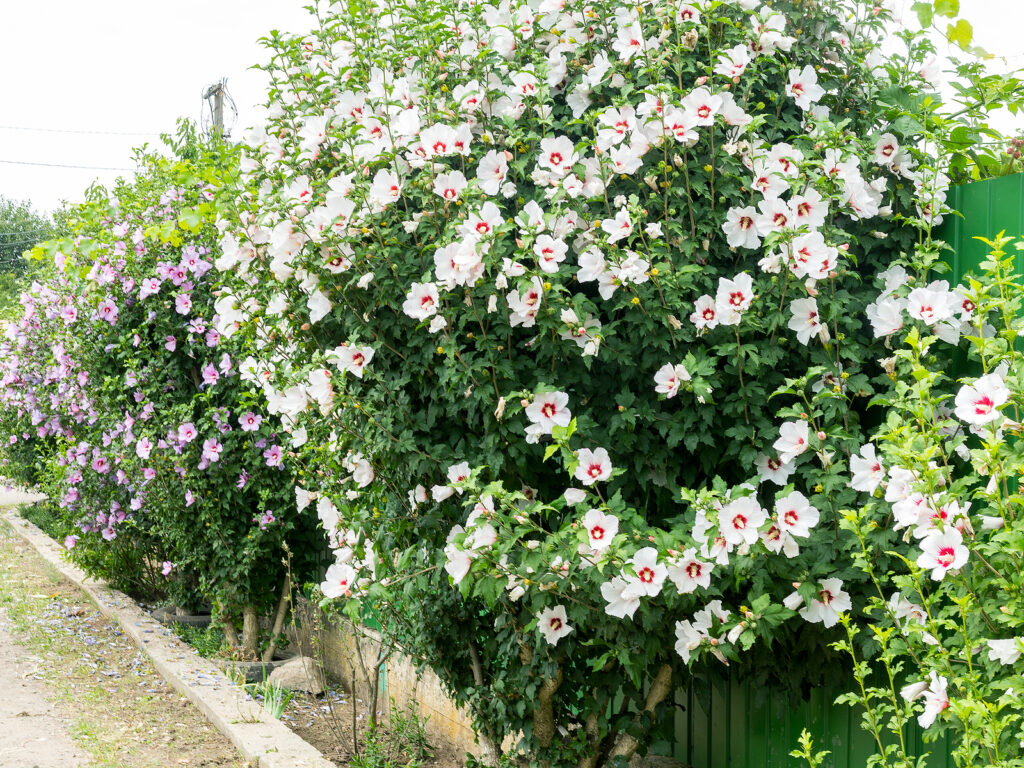
Shrubs all zones
Cut flowers for fresh use or drying. Prune summer-blooming shrubs and vines when they finish flowering. Prune hydrangeas after bloom. After flowering prune deciduous shrubs such as Choisya, jasmines, and Philadelphus. Prune Wisteria runners. Trim hedges regularly to avoid having to cut them back too much at one time. Keep hedge bottoms weed free. Shear formal hedges such as box, coniferous evergreens, privet, and barberry. Clip beech, holly, hornbeam, and yew hedges as needed. Shape up shrubs like forsythia; do not destroy their natural shape. Remove suckers from grafted rhododendrons. Train and prune vines as needed. Plant container-grown shrubs if the weather is not hot. Water consistently and deeply in dry areas, with special attention to all shrubs, broad-leaved evergreens, and plants about to bloom. Weed around shrubs. Replace mulch as needed. Watch for pests and signs of disease. Softwood cutting may now be taken of Camellias (root under glass), Japanese yew, pomegranate, and poinsettia. Take semi-ripe cutting of shrubs including Deutzia and Weigela. Layer Wisteria shoots and other shrubs. In a cold frame, root semi-ripe cuttings of Buddleia, Callicarpa, Cotoneaster, Deutzia, Euonymous, mallow, and Viburnum. Root cuttings of, honey suckle, and Pyracantha; use bottom heat. Chlorosis (yellowing of leaves) may appear on plants in summer. It can be is caused by excess alkalinity. Apply an iron chelate to the soil.
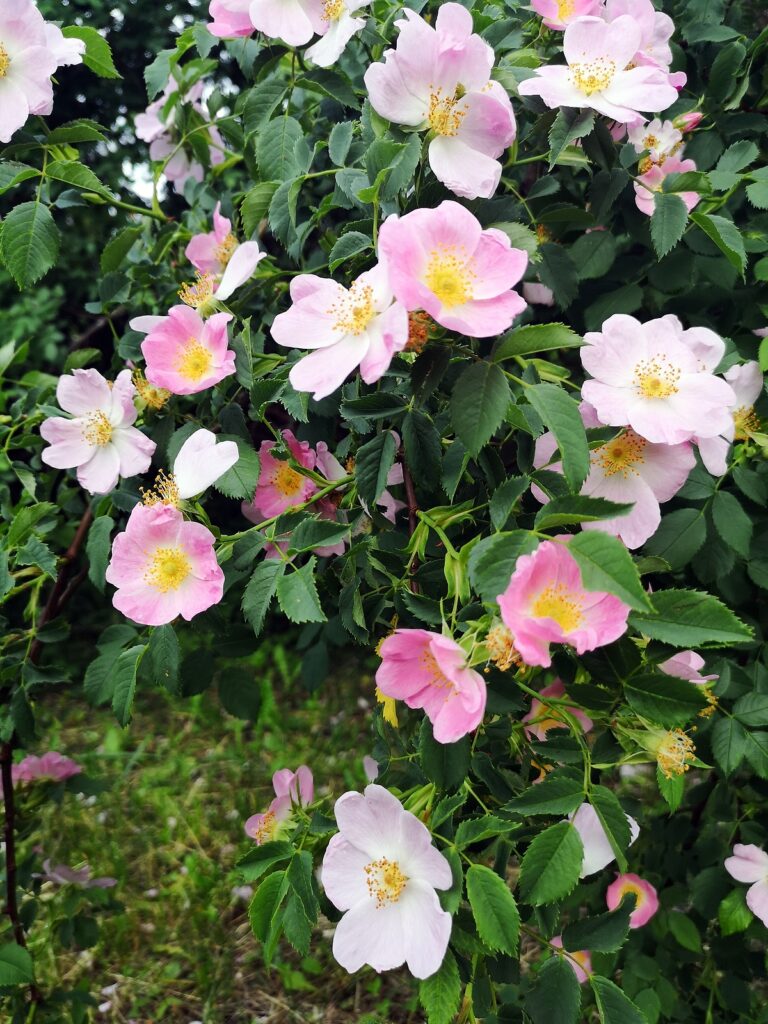
Roses all zones
Deadhead faded rose flowers to encourage new buds and growth. Disbud roses and other flowers for larger blooms; remove side buds to encourage large single blossoms or remove terminal buds to encourage clusters of blossoms. Prune climbers and ramblers when they finish blooming. Tie in vigorous shoots on climbers and ramblers when they develop. Plant container-grown roses if the weather is not too hot. Order roses for fall planting. Water established roses deeply especially if the weather is dry. Continue mulching around roses. Fertilize roses; apply a high-phosphorus granular organic fertilizer to encourage flowering. Apply supplemental liquid fertilizer for another two or three weeks—longer where frost does not come in autumn. Where frost happens, withhold fertilizer for two months before the first frost; give roses a rest and avoid encouraging new growth that can be injured by early frosts. Watch for pests and signs of disease. Spray against insect pests. Watch for aphids on roses and spray promptly if they are found. Remove and discard diseased leaves. Keep fallen leaves picked up to prevent black spot. Continue spraying roses regularly with a fungicide and watch for black spot, mildew, and rust. Propagate roses by budding. Order roses for fall planting.

Lawns all zones
Mow and edge the lawn as needed. Mow the lawn at a high setting in hot weather. Leave grass clippings on the lawn in dry weather. Plug or sprig new lawn areas with St. Augustine, Centipede, or Bermuda grass (this last may also be seeded). Lay sod. Water lawn weekly, twice a week if temperature is above 90℉ (32℃) degrees. A few good soaks each week will be better than many sprinklings that do not penetrate the soil deeply. Water early in the evening or early in the morning to minimize waste. Drench any spots on the lawn where pets or wildlife have urinated. Fertilize the lawn on cool, cloudy days. When planting a new lawn, apply a lawn fertilizer with relatively high phosphate and potassium level to encourage the development of strong roots. Fertilize established lawns with a high nitrogen fertilizer. In drought, when grass turns blue-green and wilts, sift compost over surface and let it work down gently around roots. If the lawn turns yellow (Chlorosis) it may be caused by excess alkalinity. Apply an iron chelate to soil. Control ants found in the lawn. Protect areas that are frequently used by children or move swings and other play equipment around to spread wear and tear.

Ground covers and ornamental grasses all zones
Cut the stalks of annual ornamental grasses for indoor display. Collect seeds from selected ornamental grasses and ground covers. Prune ground covers. Prune or shear ground cover that is setting seeds. Plant ground cover and perennial ornamental grasses. Water ornamental grasses and ground covers when necessary. Fertilize newly planted ground covers and ornamental grasses. Check for insects, disease. Take cuttings of ground covers to start new plants. Collect seeds from selected ornamental grasses and ground covers. Order ground covers and ornamental grasses for fall planting
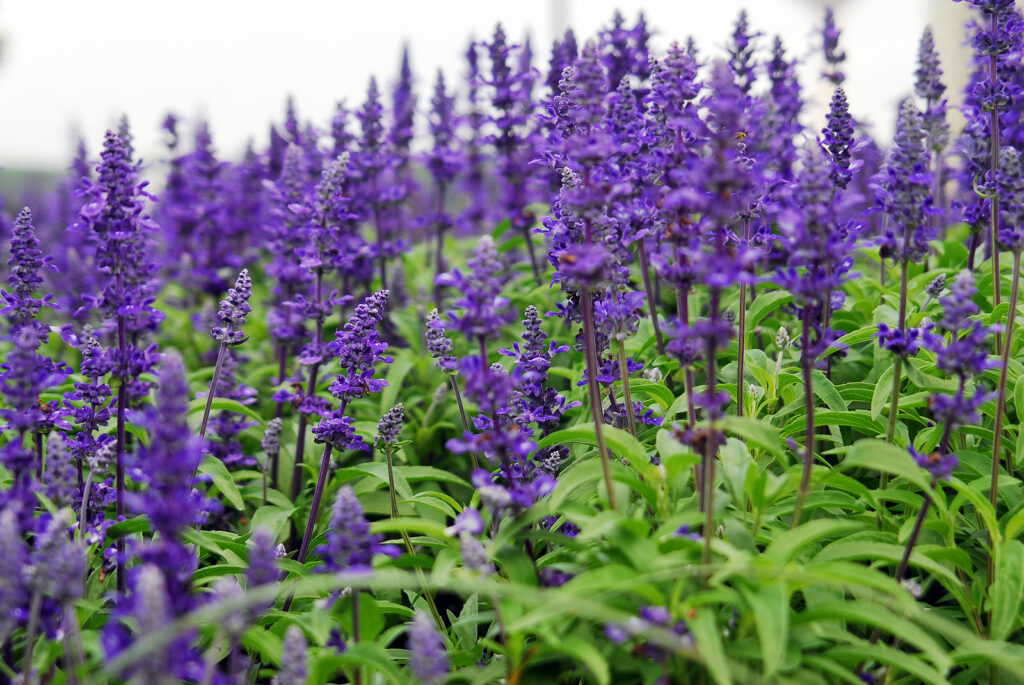
Perennials all zones
Harvest cut flowers for indoor displays. Cut flowers and ornamental grasses for drying. Deadhead faded flowers; cut back ragged-looking plants and brown ferns to stimulate new growth. Remove old flower stalks of perennials. Achilles, delphiniums, hardy geraniums, lupins, and salvias if cut back will often flower again. Pinch stem tips off chrysanthemums until the middle of the month. Feed late-blooming perennials with compost tea or fish emulsion—Clivias, Ixoras, Hibiscus. Dig up iris; check for borers and root rot. Divide and replant iris. Plant potted perennials. Sow perennials and biennials for plants to bloom next year. Water perennials if the ground is dry. Hoe beds and borders regularly to keep down weeds. Keep beds and borders well mulched through the hottest part of summer. Watch for pests and signs of disease and treat immediately if found. Check for mildew in hot, wet climates. Take softwood cuttings for rooting. Cuttings can now be taken and rooted including Coleus, Fuchsia, geraniums, Lantana, Heliotrope, and other tender plants for winter blooms indoors.
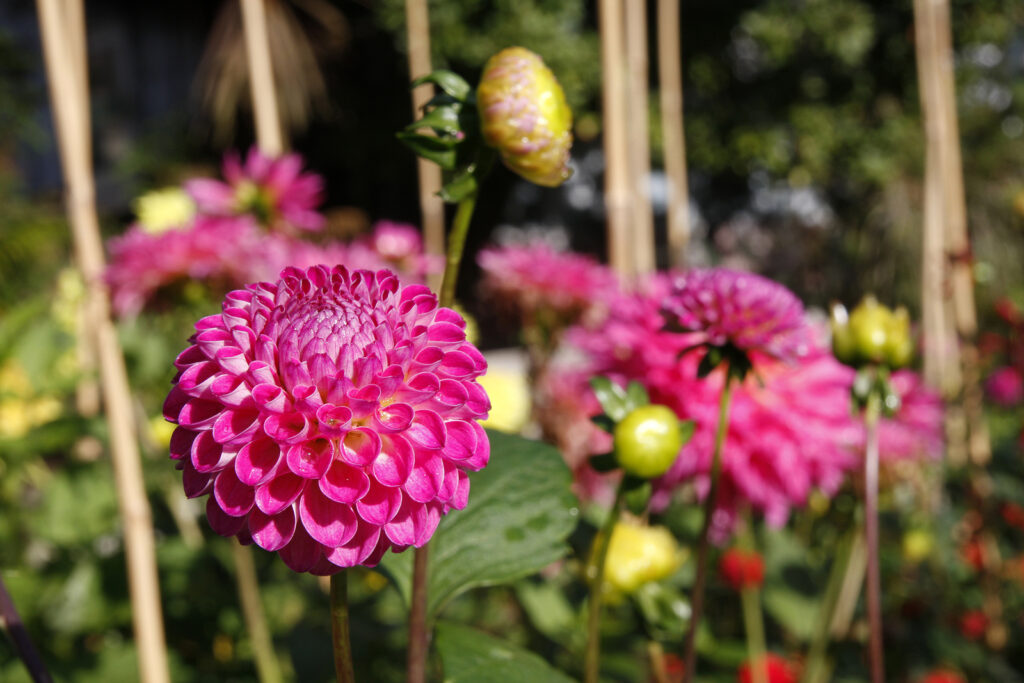
Bulbs all zones
Deadhead summer bulbs as they finish blooming. Spring-flowering bulbs may be dug, dried off, and stored for fall planting after foliage has died back; tulips may remain in the ground or be dug up each year and replanted in autumn. Dig and divide bearded iris, intermediate iris, and dwarf iris; do this about six weeks after the end of the blooming period. Divide and replant the best pieces, trimming leaves by half. Cut away any rotted or pest-ridden parts, dust cuts with disinfectant, cut rhizomes into small clumps, and replant near the surface. Prune side branches of dahlias to produce larger flowers. Feed peonies after bloom; do not remove foliage from peonies. Raise amaryllis bulbs that have sunk too deep in the ground. Stake tall plants such as lilies, gladiolus and dahlias. Water during dry weather. Fertilize summer-flowering bulbs. Order bulbs for fall planting; order Amaryllis, day lilies, Oriental poppies, iris, Madonna lilies, Colchicums, fall-blooming crocus, Nerines, Sternbergias, and winter Aconite; plant these as soon they come. Dig new beds and borders deeply, removing perennials weeds, and fork in aged compost and manure.
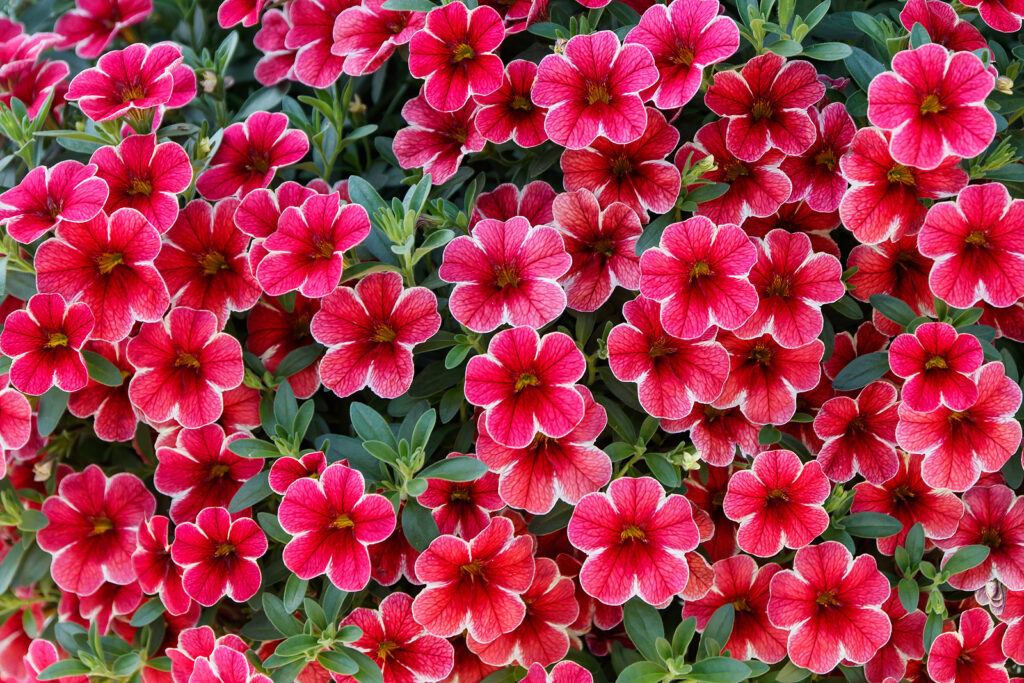
Annuals all zones
Cut flowers for indoor displays. Cut flowers for drying. Deadhead faded flowers. Cut back or replace worn-out plants. Pinch back tall-growing plants. Stake tall-growing plants. Feed plants in containers to keep the blooms coming. Collect seeds from selected flower heads. Thin biennial seedlings. Train vines and climbing annuals. Sow hardy annual seeds indoors or outdoors. Sow biennial seeds indoors or outdoors. Sow or set out new plants in bare spots. Water as needed. Mulch beds and borders through the hottest part of summer. Feed fast-growing annuals. Weed flower beds. Mulch beds and borders through the hottest part of summer. Watch for pests and signs of disease. Combat pests and fungal disease using organic means, applying insecticides and fungicides only if necessary. For fall flowers, sow seeds of annuals like pansies, calendula, candytuft, and sweet alyssum. Take cuttings to pot up for winter houseplants.
Rock garden all zones
Divide and replant alpines, such as Achilleas, Ajugas, and mossy saxifrages, after flowering. Dig and divide rock garden perennials such as Arabis, Alyssum saxatile, Heuchera, Iberis, Phlox nivalis, and Phlox subulata. Water alpines in hot weather especially those planted recently. Save seeds from short-lived alpines, including columbines, poppies, and primulas.
Water garden all zones
Remove excess leaf growth form water lilies. Thin out oxygenators. Replenish the pond as necessary. Deadhead bog plants. Weed the bog garden.

Container gardens all zones
Deadhead faded flowers. Weed and fertilize container plants regularly; use a liquid fertilizer. Move containers to the shady part of the garden if the weather is hot. Water as often as needed, especially window boxes and hanging baskets. Watch for pests and signs of disease.
Greenhouse all zones
Add extra shading to the glass if necessary. Feed potted plants regularly. Pot up and pot on seedlings as necessary. Keep a vigilant watch for pests and diseases. Spray promptly or try a biological control for greenhouse pests. Feed chrysanthemums regularly. Sow spring-flowering plants such as Cyclamen, Schizanthus, and Exacum. Plant hyacinths for early flowering.















